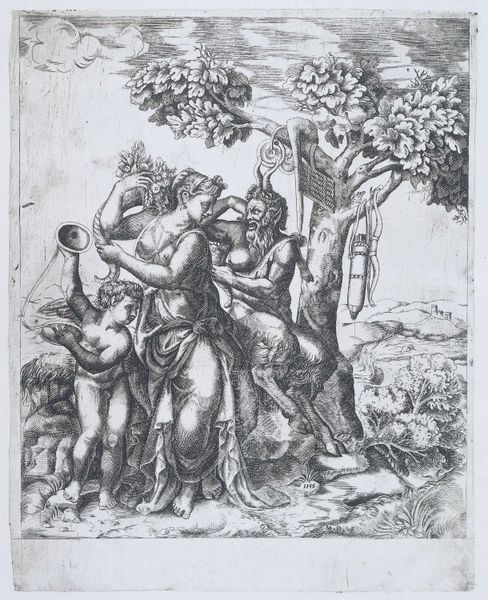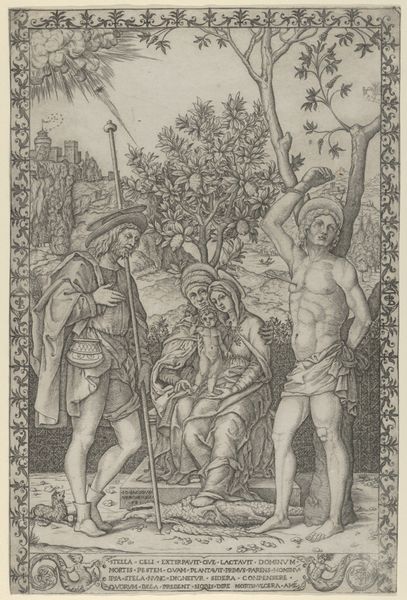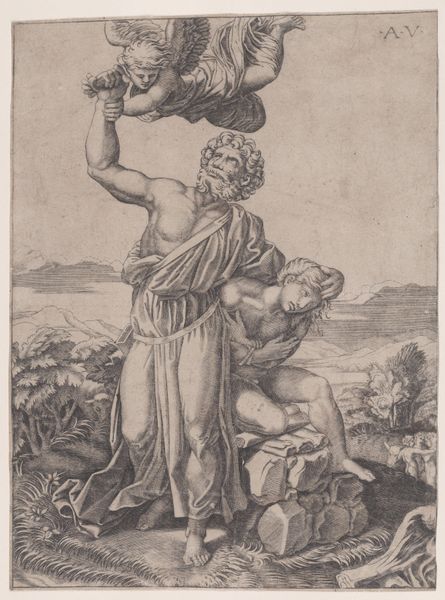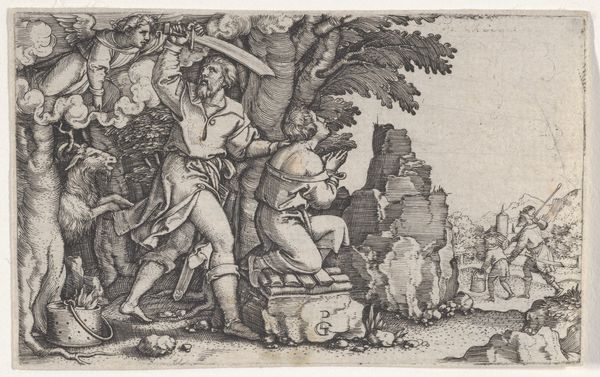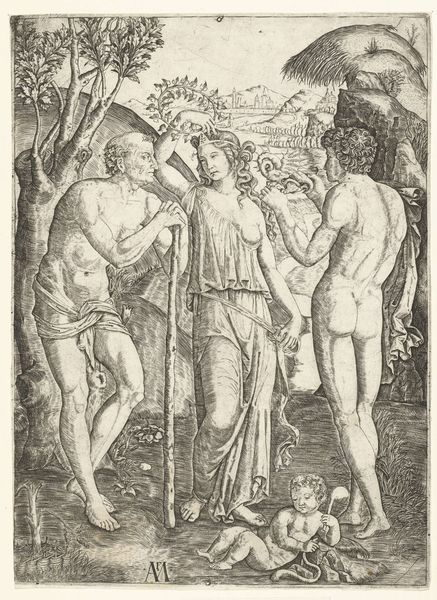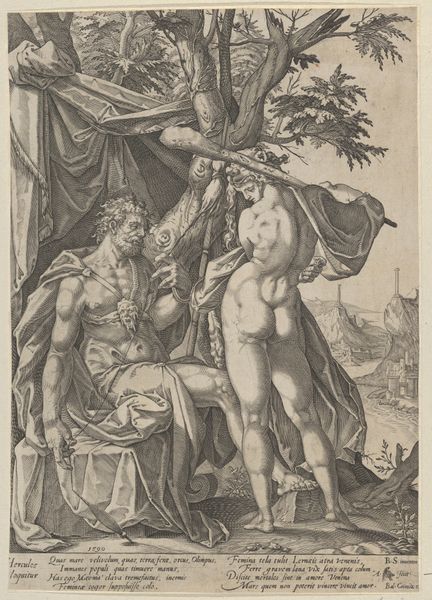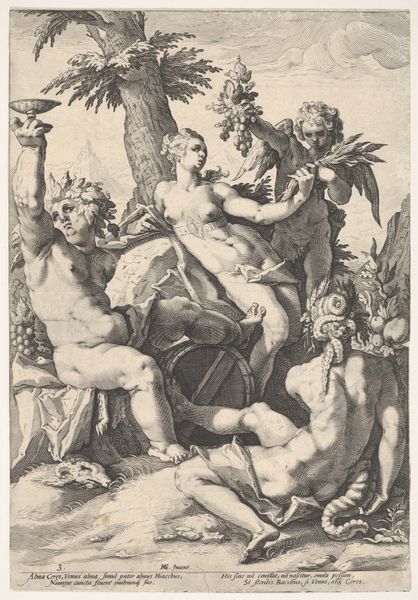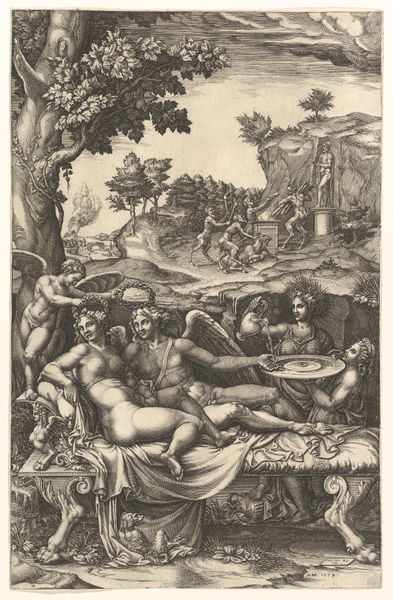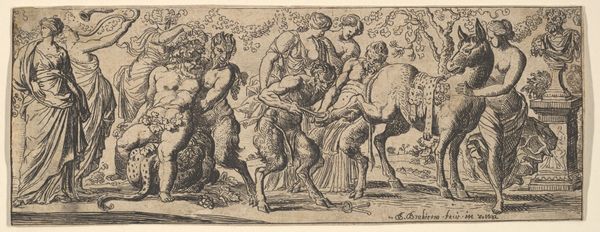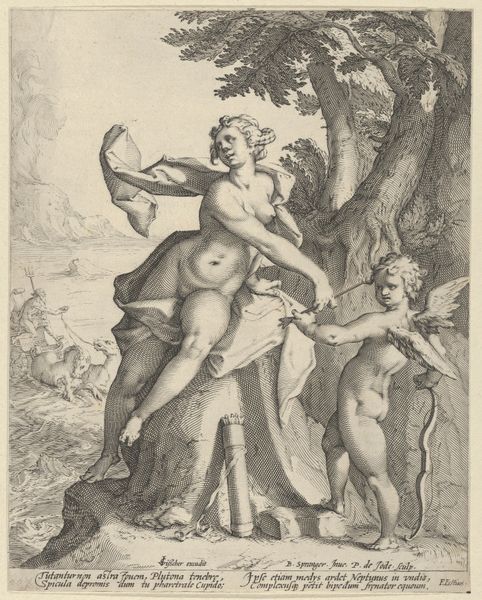
Pan at the left seated next to a standing nymph, to the right Cupid holding cymbals 1531 - 1576
0:00
0:00
drawing, print, engraving
#
drawing
#
allegory
# print
#
figuration
#
cupid
#
pencil drawing
#
men
#
musical-instrument
#
italian-renaissance
#
engraving
Dimensions: sheet: 10 9/16 x 8 5/8 in. (26.8 x 21.9 cm)
Copyright: Public Domain
Giulio Bonasone etched this print of Pan, a Nymph, and Cupid sometime in the 16th century. We see Pan, the god of the wild, identifiable by his goat-like features, in close proximity to a nymph, a symbol of nature's allure. Cupid, the god of love, is also present, holding cymbals, instruments often used in ecstatic rituals. Pan's image, half-man and half-animal, has ancient roots in Greek culture. He embodies primal instincts, a figure of untamed energy. Think of similar hybrid creatures from antiquity such as the Minotaur of Crete. The interesting aspect is that, although Pan lost prominence with the advent of Christianity, his image reappeared in art and literature during the Renaissance, often carrying a sense of longing for a lost, more innocent relationship with nature. The enduring nature of this primal imagery evokes powerful emotions, connecting us to the depths of human experience, where the boundaries between the human and the animal blur. These symbols resurface across epochs, transformed yet familiar, a testament to the cyclical nature of cultural memory.
Comments
No comments
Be the first to comment and join the conversation on the ultimate creative platform.
